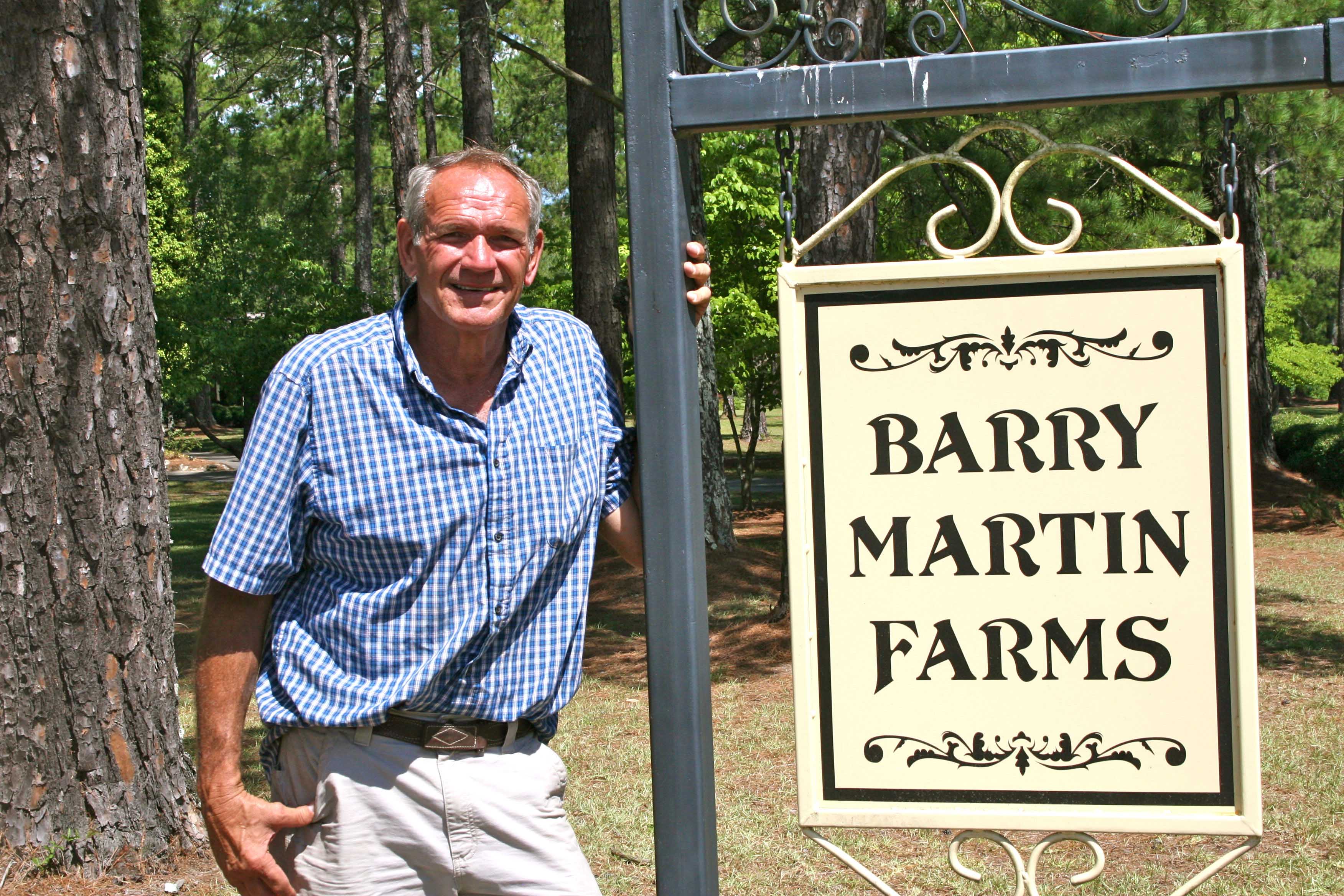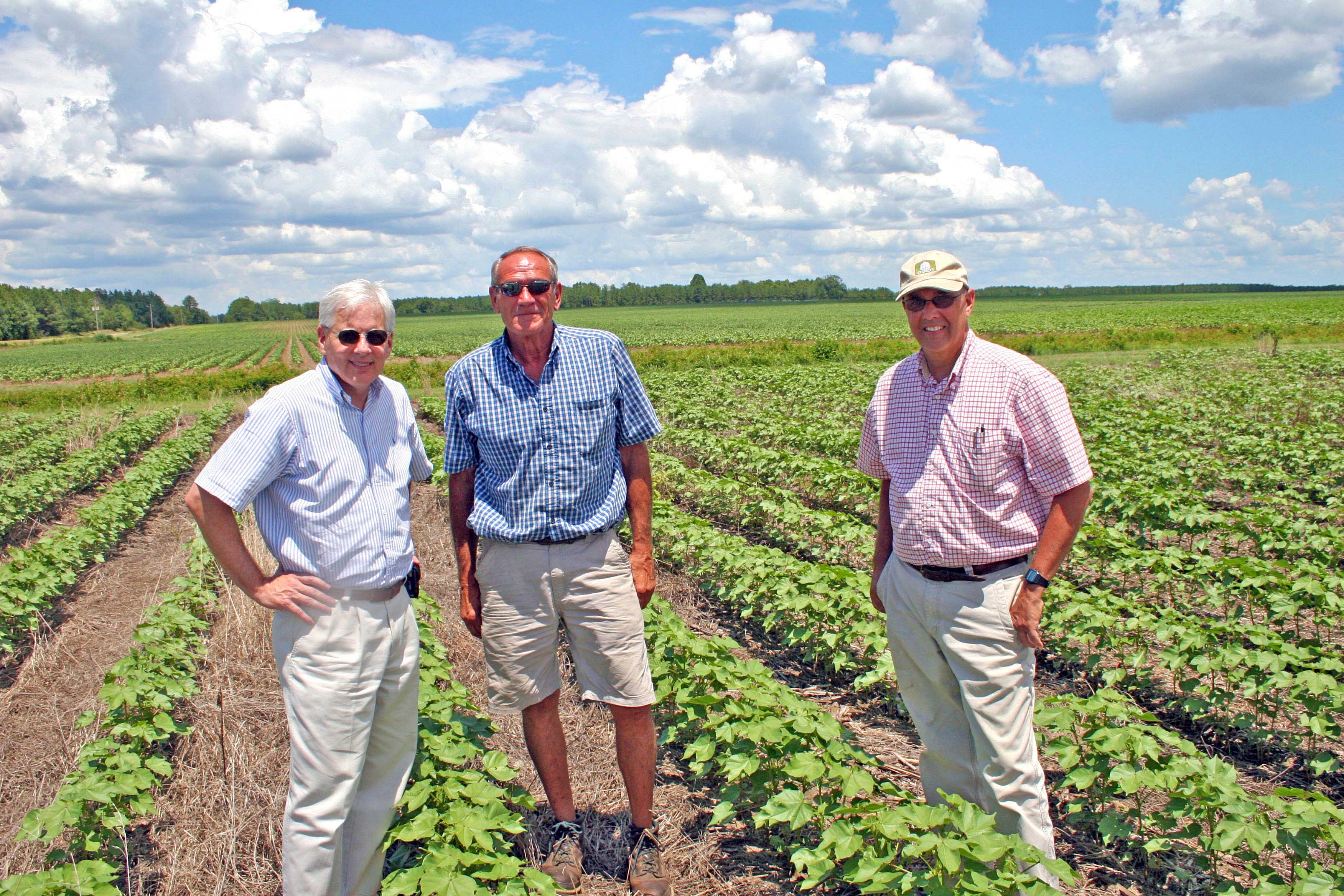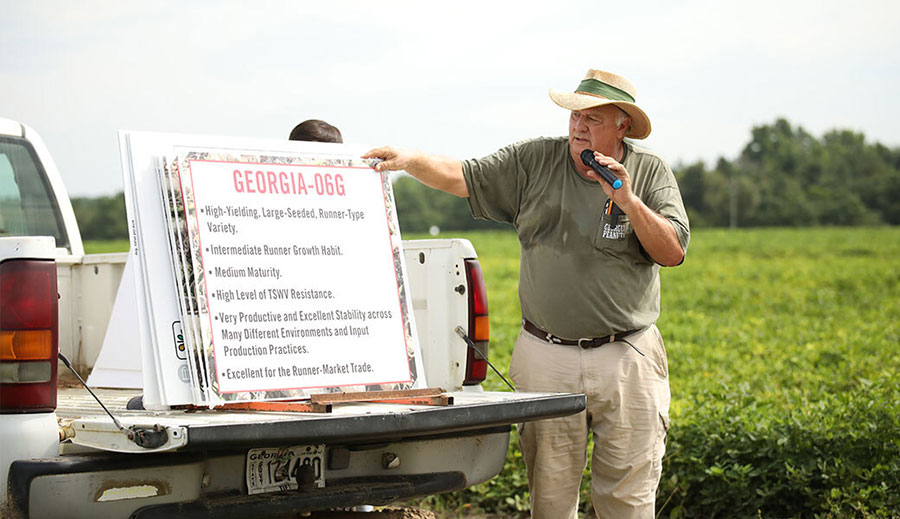Barry Martin is the 2012 Swisher Sweets/Sunbelt Expo Georgia Farmer of the Year.
It doesn’t take long to notice there’s something different about his land.
Walking between his rows of vibrant cotton just south of Hawkinsville, you feel the ground crunch lightly as you step. It’s corn and rye stubble — the remainder of last year’s growth — giving underneath your feet.
Ladybugs fly up from the cotton. Spiders swing onto your legs. Although it hasn’t rained in a few days, the soil is visibly moist.
What you can’t see is just as intriguing. Across the granules of sand and tiny bits of clay lie an untold amount of AU Robin seeds of crimson clover.
After sprouting between the rows of cotton in the fall, the clover will fix nitrogen in the soil. As it seeds out next spring, Martin will cut and mat it down and plant the next cash crop with one run of a tractor and a strip-till planter he modified himself.
The clover will add organic matter and mulch to the fields. The following fall it will germinate, and the cycle will start again.
Timely planting and cutting of cover crops and minimal cultivation are parts of a conservation tillage system at work. The University of Georgia College of Agricultural and Environmental Sciences recognized Martin as the 2012 Farmer of the Year because of the innovation on his farm and the leadership he’s shown in the farming community.
“To me this is the most sustainable system we’ve got,” said Ronnie Barentine, UGA Pulaski County Extension agent, who has collaborated with Martin to develop his on-farm systems for almost 17 years.
Barentine says the organic matter content in Martin’s field is about 2.82 percent, a level unheard of in Georgia’s hot, humid climate. A microscopic ecosystem is at work in his soil, releasing nutrients and holding water. However, a good pass with a plow would send the organic matter percentage plunging back toward zero.
Martin estimates cover crops save him about two inches of water per acre per year, which translates into 27,154,000 gallons of water. The small amount of runoff from rain is practically clear, keeping sediment out of the county’s waterways, Barentine said.
In 1996, Martin asked Barentine to help him make conservation tillage work on his farm. Seeing low profit margins, drought, erosion, disease and other local farmers go under, Martin worried about the future of his third-generation farm.
As it turned out, in addition to saving soil and water, conservation tillage made economic sense.
Fewer trips to cultivate weeds meant less money spent on fuel and farm labor on Martin’s 600 acres. Using clover to add nitrogen to his soil cut his use of nitrogen fertilizer in half, and better yields reduced the number of acres Martin needed to farm.
By itself, Martin’s farming operation has been a model of efficiency and environmental stewardship for other farmers in Pulaski County. But Martin has also been an educator, speaking annually at the Georgia Conservation Production System’s Conference, and he’s a willing participant in agricultural research.
Next to a bend in the Ocmulgee River, Martin grows peanuts, corn and cotton. The middle of the field still carries the rutted scar from where the river jumped its banks in 1994.
The cotton here is part of a pigweed pilot project funded by the Natural Resources Conservation Service — an effort to control the herbicide-resistant weed that plagues Georgia farmers. A brown layer of winter rye is thick where it’s been rolled between the cotton plants, suppressing the pigweed seed. There’s not a pigweed plant in sight, just ladybug larvae hugging the cotton leaves.
The heavy crop residue has proved to be a deterrent to thrips, a vector for Tomato Spotted Wilt Virus, which has become a major disease of peanuts in Georgia.
On the drive back to Martin’s house a bobwhite quail darts across the dirt road and flutters into the brush. Martin has seen an increase in the birds due, in no small part, to the limited disruption of his farming techniques.
Martin is quick to share the Farmer of the Year honor with Barentine.
“This guy right here — he gets just as much credit,” Martin said of Barentine.
Through trial, error and constant tweaking, Barentine and Martin have worked together to make cutting-edge research work in the field.
Barentine is proud to say nearly 90 percent of the 60,000 acres of farmland in Pulaski County is being farmed with limited tillage, which has significantly reduced the erosion of the county’s dirt roads, among other benefits.
For his efforts in sustainable agriculture and in the community, Martin was named the winner of the Planters Peanuts’ Naturally Remarkable Planters Award for the Southeast in 2011. Receiving $10,000 to donate to the community project of his choice, Martin picked the Pulaski County Cooperative Extension Endowment to support agriculture and youth 4-H programs across the county.
As Georgia's Farmer of the Year, Martin is the state's nominee for the Swisher Sweets/Sunbelt Expo Southeastern Farmer of the Year Award, which will be given out at the Sunbelt Ag Expo in Moultrie, Ga., Oct. 16-18.










